Published: Feb 13, 2025Time to read: 6mins Category: Learning
5 Career Development Best Practices for 2025: What Separates Leaders From Laggards?
The recent PeopleFluent-sponsored HR.com Future of Career Development and Mobility 2024-25 report found that most organizations have an “immature” career development system. The results suggest that “career development approaches are stagnating in most of today’s organizations.” In this article, PeopleFluent Product Marketing Manager, Katie Coleman, looks at the strategies used by the 20% of organizations with strategic and innovative career development programs and offers five expert tips you can implement to improve your company’s L&D processes.
The report suggests that an overwhelming majority of organizations are struggling to enhance their talent development strategies. The survey asked how respondents would describe career development in their organizations on a five-point scale. Concerningly, just one-fifth of respondents chose the top two maturity levels:
- 15% responded with “Strategic,” defined in the survey’s maturity model as taking “[a] formal approach [that] is culturally reinforced, linked to specific goals and practices, and integrated with succession and talent management strategies.”
- 5% responded with “Innovative,” defined as having integrated programs that are “forward-looking, agile, linked with workforce planning, and constantly trying to improve through new advances.”
The report labels businesses in these two categories as “career development leaders,” while the remaining 80% of organizations are defined as “career development laggards.” To understand what separates the leaders from the laggards, let’s look at some key findings from the report that help us understand what the leaders are getting right—and what other organizations can do to improve their programs.
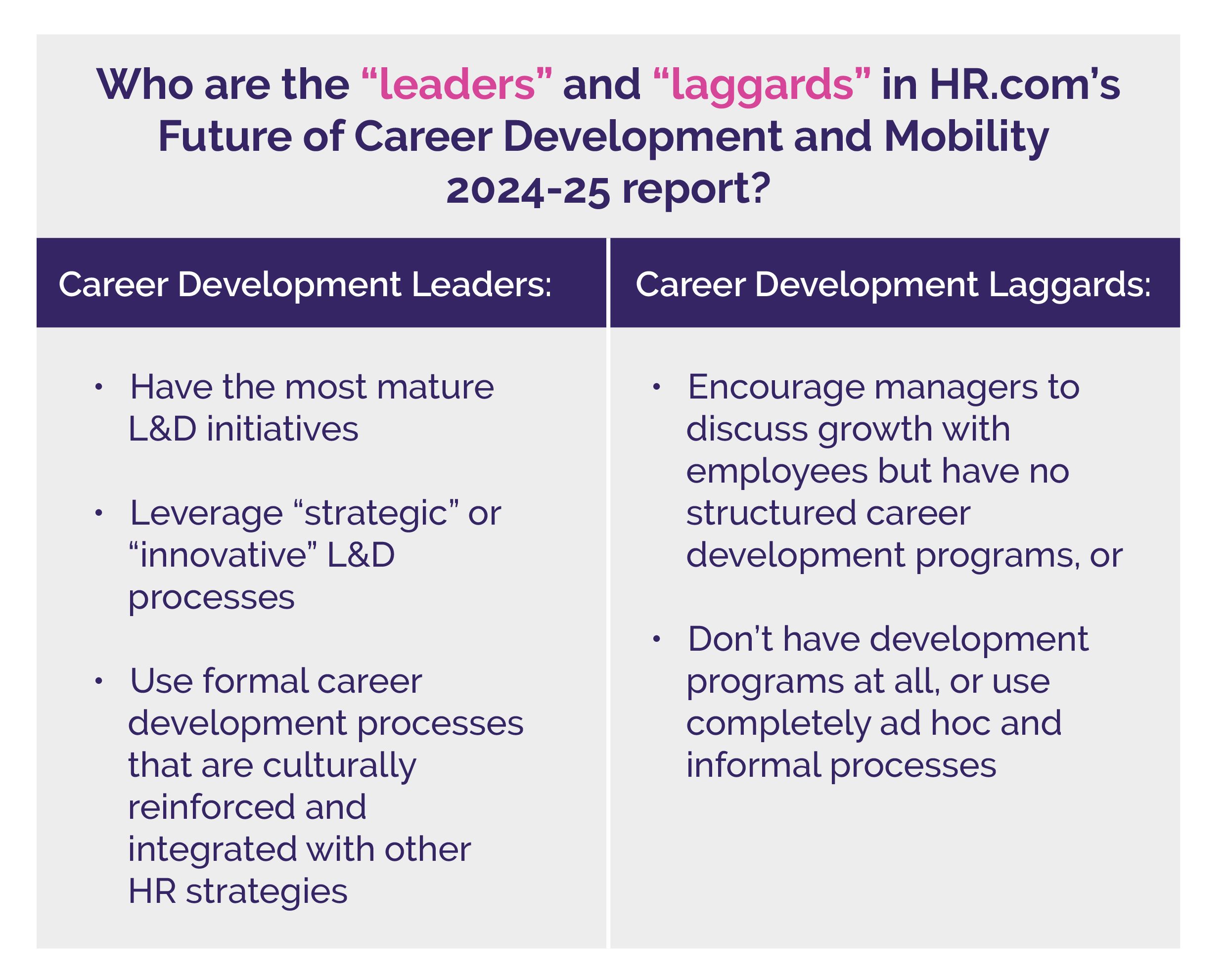
LEARN MORE ABOUT WORKFORCE GROWTH | ‘Bridging the Skills Gap: 7 Proven Tips to Enhance Employee Development’
1) Leaders Are More Likely to Have Effective Processes for Internal Mobility
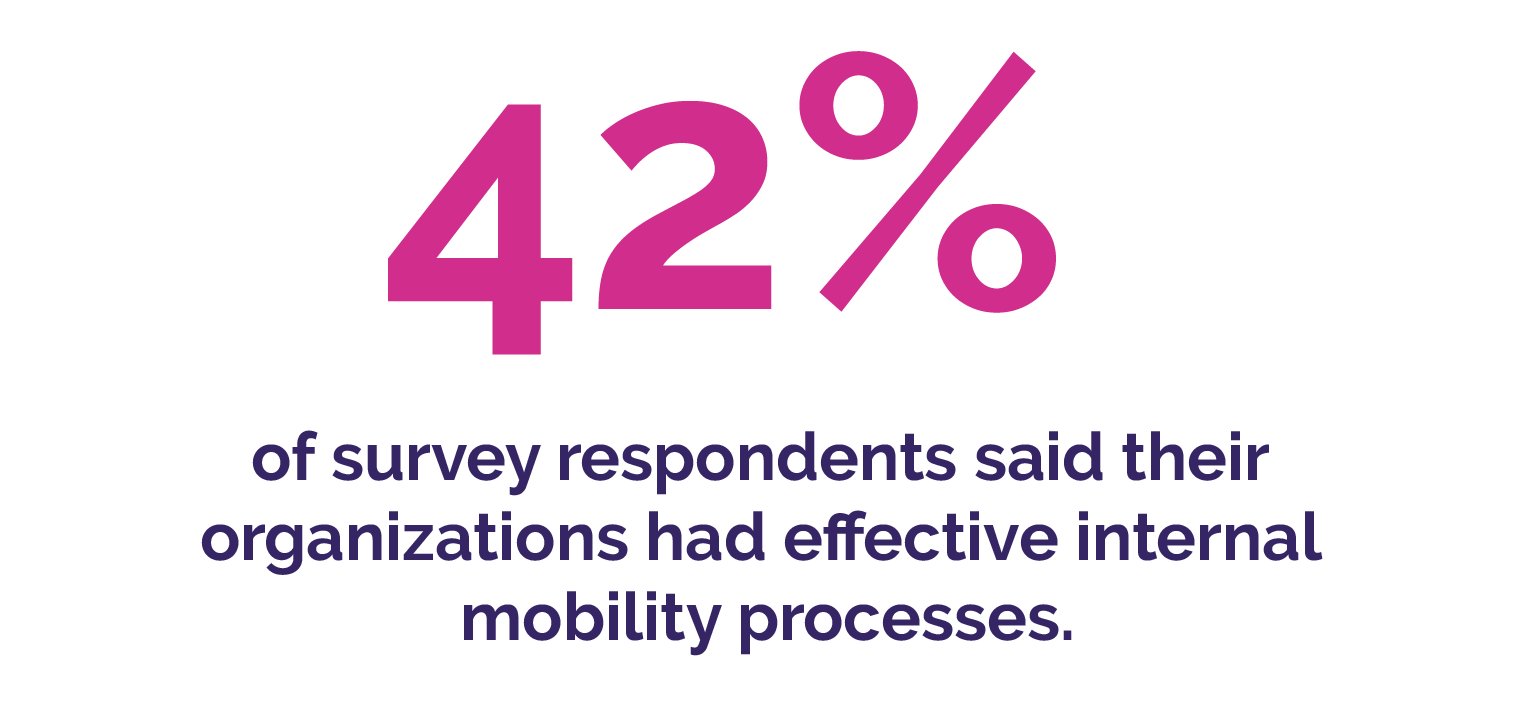
When asked about internal mobility, 42% of respondents said their organizations had effective processes. However, this percentage hasn’t changed since HR.com’s 2023-2024 report, suggesting that many organizations haven’t made much progress in enhancing internal mobility. While most businesses struggle with internal mobility, career development leaders are blowing other organizations out of the water. Eight in ten career development leaders agree that their organizations have effective processes for managing internal mobility, compared to just a quarter of career development laggards.
EXPERT TIP: Organizations that want to improve their internal mobility processes should consider creating structured frameworks for career development that link employee growth to succession planning and talent management. This includes empowering managers to support their direct reports’ growth and career advancement. Organizations should ensure that managers are equipped with the knowledge and resources they need to support their teams’ growth.
RELATED READING TO DOWNLOAD TODAY | ‘How to Combat Talent Hoarding and Boost Employee Retention’
2) Leaders Meet Employees’ Demand for Growth Opportunities
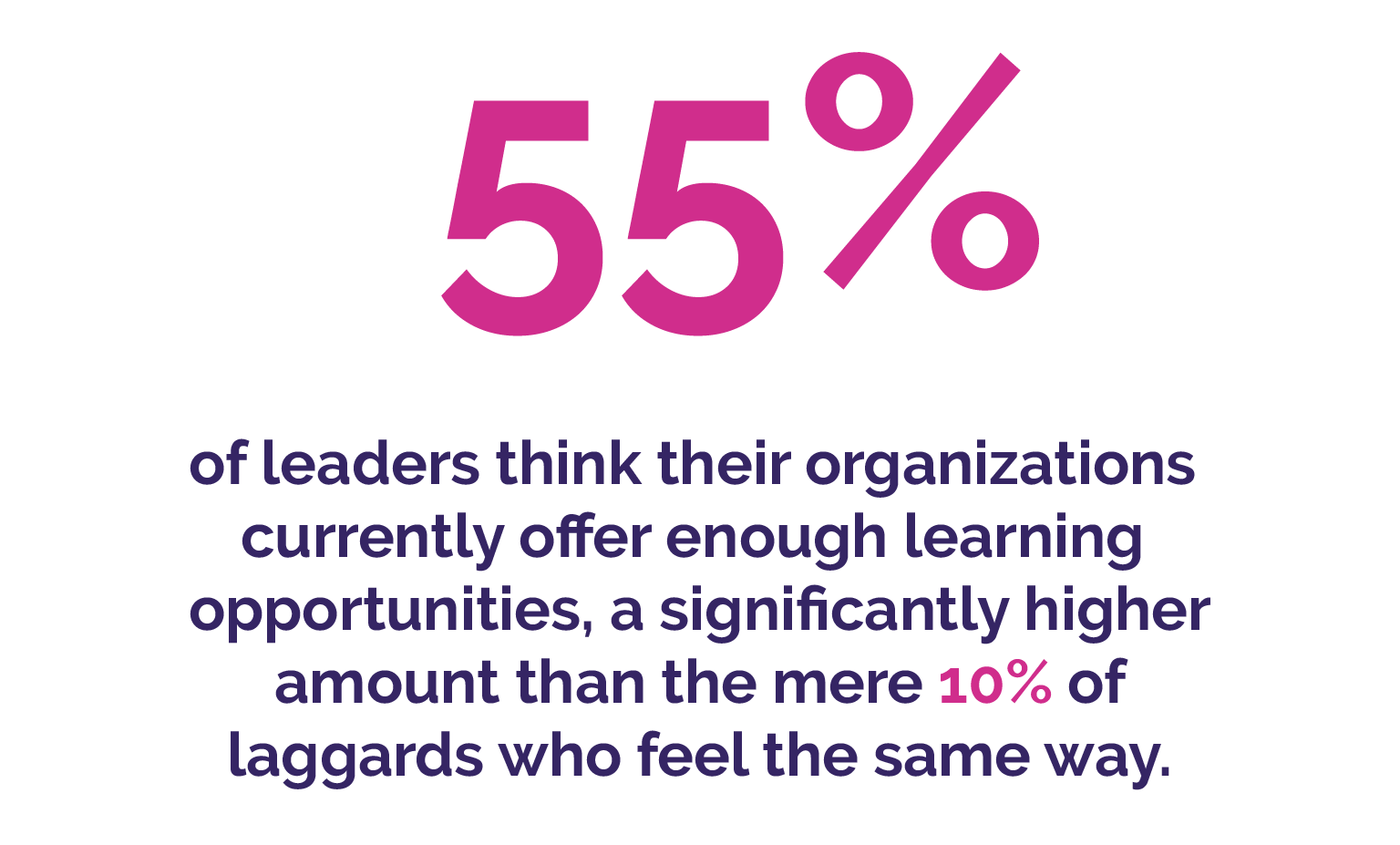
Employees value the chance to improve their skills and grow in their careers, but only 22% of survey respondents claimed to offer enough development opportunities to meet workforce demands. While most organizations are prioritizing productivity and other metrics over employee growth, leaders take a different approach.
They understand that offering more opportunities for professional learning gives workers the chance to grow while ensuring their organizations have a skilled workforce that can swiftly tackle modern problems and support their business needs. Over half (55%) of leaders think their organizations currently offer enough learning opportunities, a significantly higher amount than the mere 10% of laggards who feel the same way.
EXPERT TIP: One way organizations can determine whether they’re offering adequate development opportunities is by requesting feedback from their employees. Surveys, focus groups, and one-on-one conversations can help businesses assess their workers’ attitudes about current growth opportunities and make informed decisions to improve their systems and processes.
READ MORE ABOUT EMPLOYEE GROWTH | ‘How to Successfully Design & Deploy a Skills-Based Talent Development Strategy’
3) Leaders Devote More Time and Resources to Employee Growth
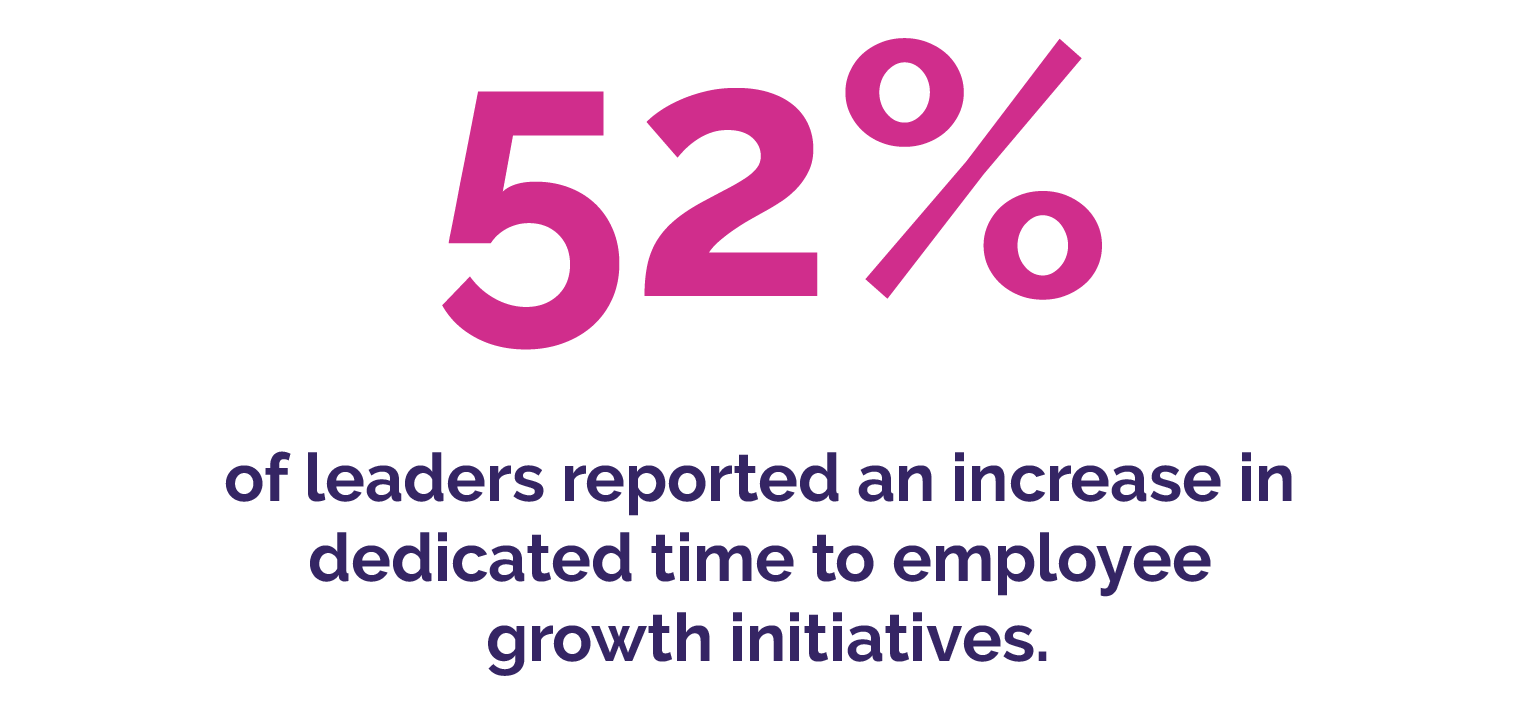
Most companies haven’t dedicated additional time or financial resources to their employee growth initiatives, but leaders are more likely to devote greater resources to these processes than other organizations. When asked if financial resources solely dedicated to career development had increased or decreased at their organization, 38% of leaders responded with “increased a little/lot” compared to 23% of laggards. The difference was even greater when asked the same question about dedicated time. Only 31% of laggards reported an increase in dedicated time to employee growth initiatives, whereas 52% of leaders reported an increase.
EXPERT TIP: While it might not always be possible to devote more financial resources to workforce development, organizations can (and should) strive to align their budget and time resources with other strategic goals. Organizational priorities should also be consistently evaluated to ensure that budget and time allocations accurately reflect the current business needs.
HANDPICKED FOR YOU | ‘4 Ways AI Can Refine and Scale Your Skills Enablement Strategies’
4) Leaders Promote Continuous Learning Cultures
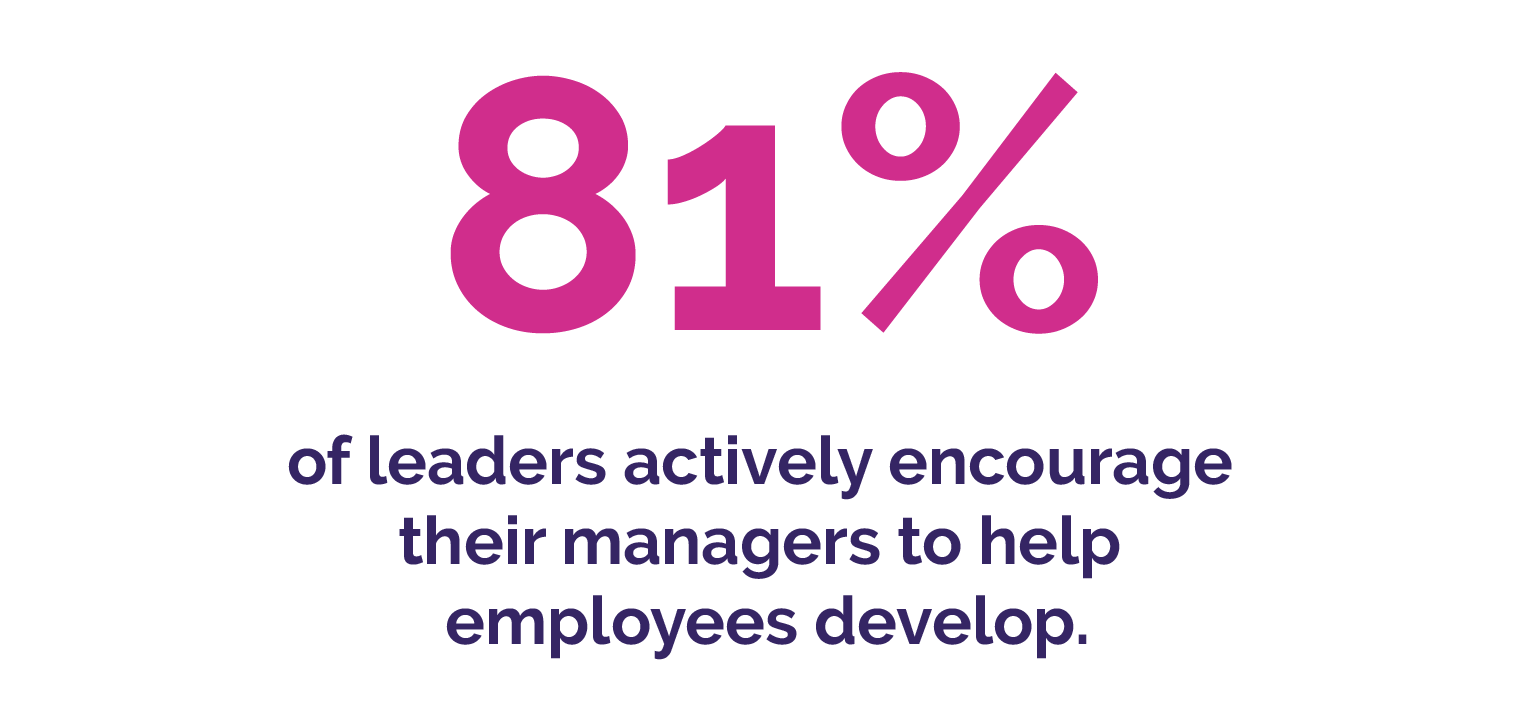
Leading career development organizations encourage their managers and HR professionals to take active roles in helping employees grow their careers. Nearly three-quarters (74%) of leaders say their managers and HR staff reinforce a culture of learning and innovation, compared to just 38% of laggards who say the same. The majority of leaders (81%) also actively encourage their managers to help employees develop. Under half (47%) of laggards say the same.
EXPERT TIP: Organizations can work to improve their learning cultures by training managers to help employees develop their careers. Support from managers and HR professionals is essential to fostering a positive learning culture. Incentivizing these employees to actively participate in workers’ career growth can help organizations cement the importance of continuous learning within their company cultures.
KEEP READING | ‘The Four Es: Your Fast Lane to Continuous Learning’
5) Leaders Are Much More Likely to Leverage Development-Friendly Technologies
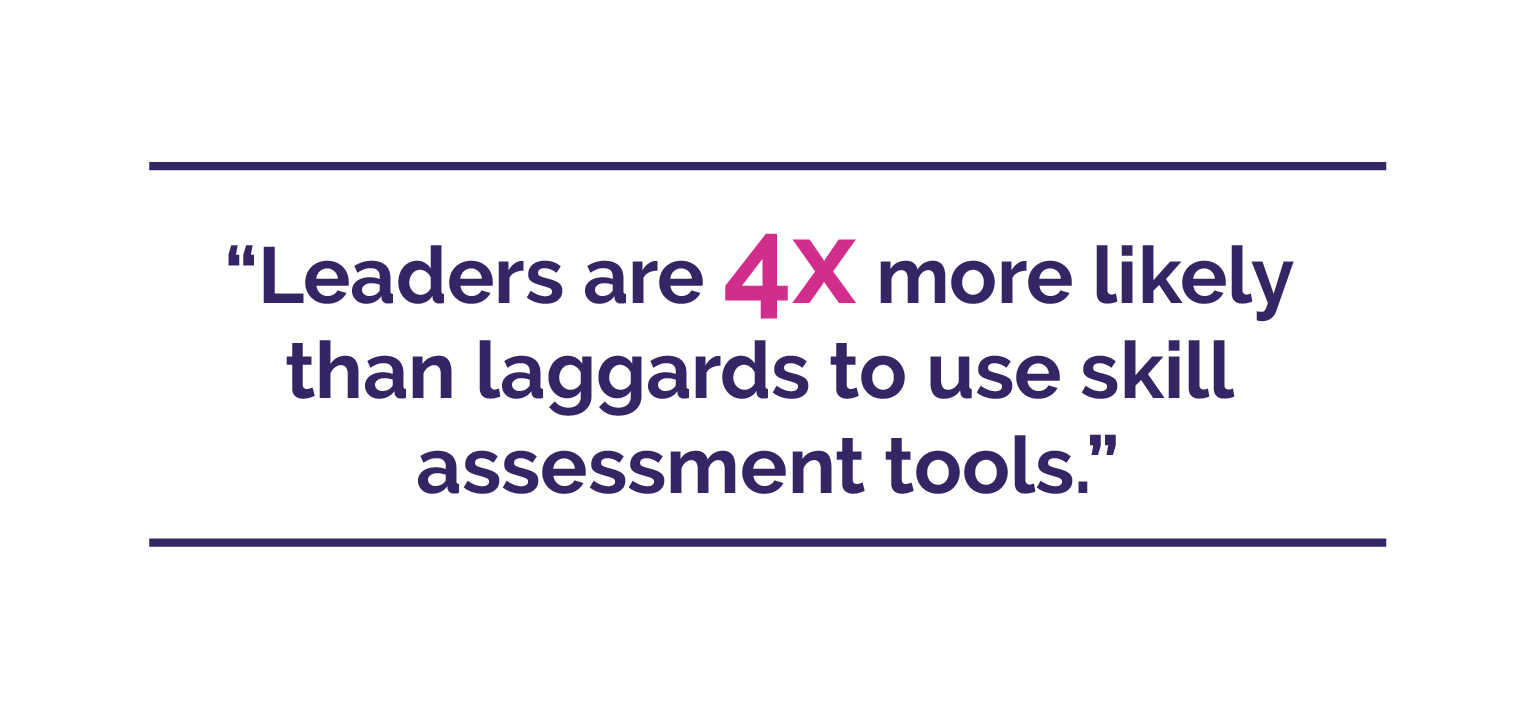
Over half of organizations use learning management systems (53%), collaborative communication tools (53%), and performance management systems (50%) to support employee development. However, leaders are more likely to be using these and other tools to take their initiatives to the next level. They are:
- Over four times more likely than laggards to use skill assessment tools (41% compared to 12%)
- Also much more likely to leverage talent mobility platforms—just 1% of laggards use them, compared to 21% of leaders.
EXPERT TIP: Skills assessment tools make it easy to identify workers’ strengths and areas for improvement so organizations can target their talent development initiatives based on individual and organizational needs. Investing in employee development-friendly technologies—like skill assessment platforms, a powerful LMS, and talent mobility platforms—allows organizations to track employee progress and make data-informed decisions to improve professional growth strategies.
LEARN HOW TO CHOOSE THE RIGHT DEVELOPMENT-FRIENDLY TECH | ‘The Ultimate Buyer’s Guide for Enterprise Learning Management Systems’
Keep Reading: Download the Full Research Report
This snapshot of what makes career development leaders stand out is just a small sample of the insights found in the full 46-page “Future of Career Development and Mobility 2024-25” report. Download the full report below to read more career development best practices and data, or request a demo of PeopleFluent Learning today!